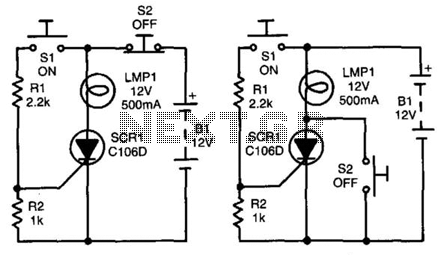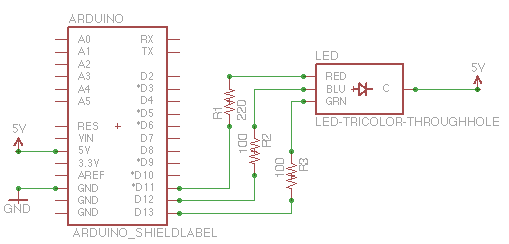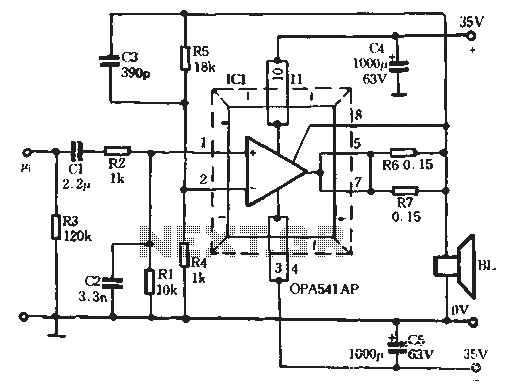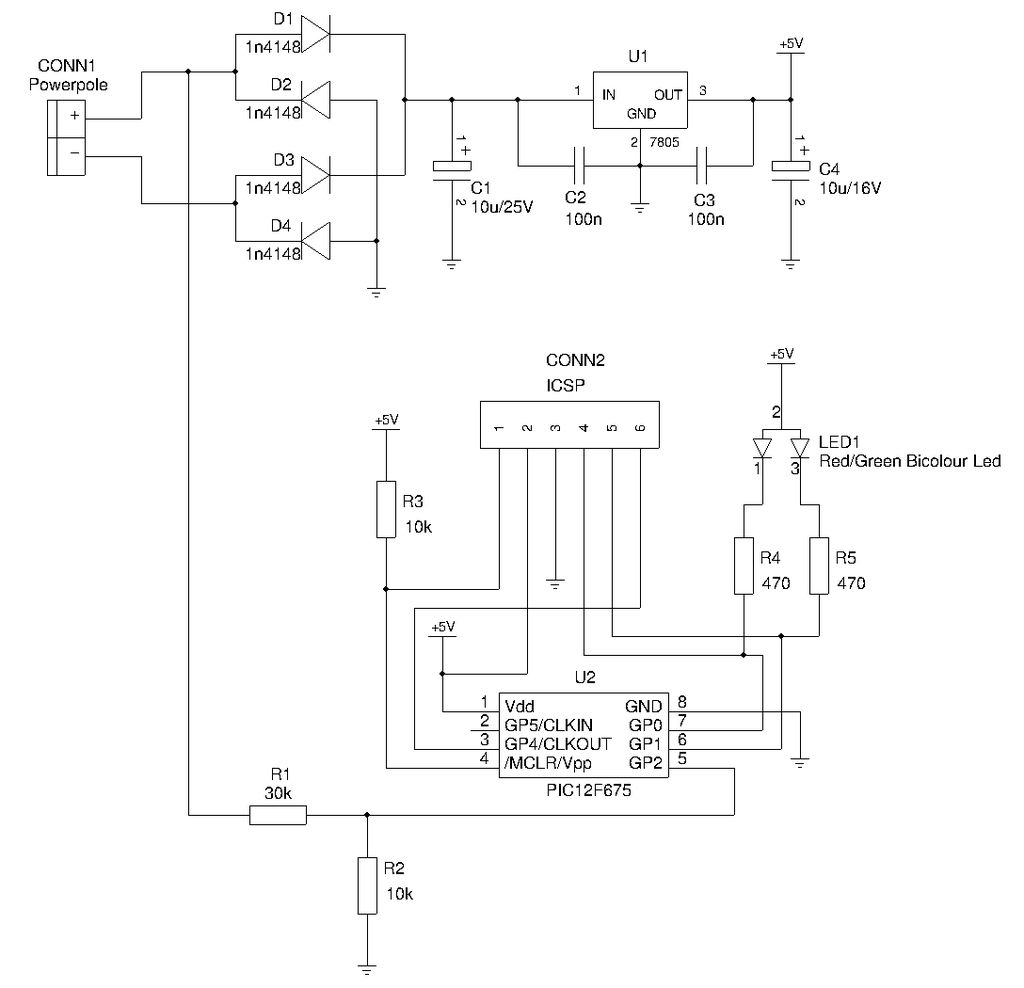
Pushbutton-Controlled Power Switch

In both circuits, the SCR (Silicon Controlled Rectifier) and the lamp can be latched on by momentarily closing switch S1, which provides gate drive to the SCR through resistor R1. In both configurations, the gate is connected to the cathode via resistor R2 to enhance circuit stability. Once the SCR is activated, it can only be turned off by momentarily reducing the anode current below the holding current (IH) value of the device. The SCR can be turned off by momentarily opening switch S2, which shorts the anode and cathode terminals of the SCR.
The described circuit utilizes a Silicon Controlled Rectifier (SCR) as a key component for controlling the operation of a lamp. The SCR is a semiconductor device that acts as a switch, allowing current to flow when a gate signal is applied. In this configuration, switch S1 serves as a momentary trigger that feeds a gate drive signal through resistor R1 to the SCR. This action effectively latches the SCR in the 'on' state, allowing current to flow through the connected lamp.
To ensure stability in the operation of the SCR, resistor R2 is employed to tie the gate to the cathode. This connection helps to mitigate any potential oscillations or instability issues that may arise during operation. The gate-cathode connection is crucial for maintaining a stable turn-on condition for the SCR.
Once the SCR is turned on, it remains in this state until the anode current drops below the holding current (IH) threshold. This characteristic is essential for the SCR's operation, as it requires a specific amount of current to remain conductive. To turn off the SCR, switch S2 is used to momentarily open the circuit, effectively shorting the anode and cathode terminals. This action causes the anode current to drop below the IH value, thereby turning off the SCR and extinguishing the lamp.
The design of this circuit is straightforward yet effective for applications requiring controlled lighting or power delivery. The use of resistors R1 and R2 plays a significant role in ensuring reliable performance and stability of the SCR during operation. Overall, this circuit exemplifies a practical approach to utilizing SCR technology for managing electrical loads. In both circuits, the SCR (and thereby the lamp) can be latched on by momentarily closing SI, thereby fe eding gate drive to the SC via Rl. In both circuits, the gate is tied to the cathode via R2 to improve circuit stability. Of course, after the SCR turns on, it can be turned off again only by momentarily reducing anode current below the device"s IH value. The SCR is turned off by momentarily opening S2, by using S2 to short the anode and cathode terminals of the SCR momentarily.
The described circuit utilizes a Silicon Controlled Rectifier (SCR) as a key component for controlling the operation of a lamp. The SCR is a semiconductor device that acts as a switch, allowing current to flow when a gate signal is applied. In this configuration, switch S1 serves as a momentary trigger that feeds a gate drive signal through resistor R1 to the SCR. This action effectively latches the SCR in the 'on' state, allowing current to flow through the connected lamp.
To ensure stability in the operation of the SCR, resistor R2 is employed to tie the gate to the cathode. This connection helps to mitigate any potential oscillations or instability issues that may arise during operation. The gate-cathode connection is crucial for maintaining a stable turn-on condition for the SCR.
Once the SCR is turned on, it remains in this state until the anode current drops below the holding current (IH) threshold. This characteristic is essential for the SCR's operation, as it requires a specific amount of current to remain conductive. To turn off the SCR, switch S2 is used to momentarily open the circuit, effectively shorting the anode and cathode terminals. This action causes the anode current to drop below the IH value, thereby turning off the SCR and extinguishing the lamp.
The design of this circuit is straightforward yet effective for applications requiring controlled lighting or power delivery. The use of resistors R1 and R2 plays a significant role in ensuring reliable performance and stability of the SCR during operation. Overall, this circuit exemplifies a practical approach to utilizing SCR technology for managing electrical loads. In both circuits, the SCR (and thereby the lamp) can be latched on by momentarily closing SI, thereby fe eding gate drive to the SC via Rl. In both circuits, the gate is tied to the cathode via R2 to improve circuit stability. Of course, after the SCR turns on, it can be turned off again only by momentarily reducing anode current below the device"s IH value. The SCR is turned off by momentarily opening S2, by using S2 to short the anode and cathode terminals of the SCR momentarily.





